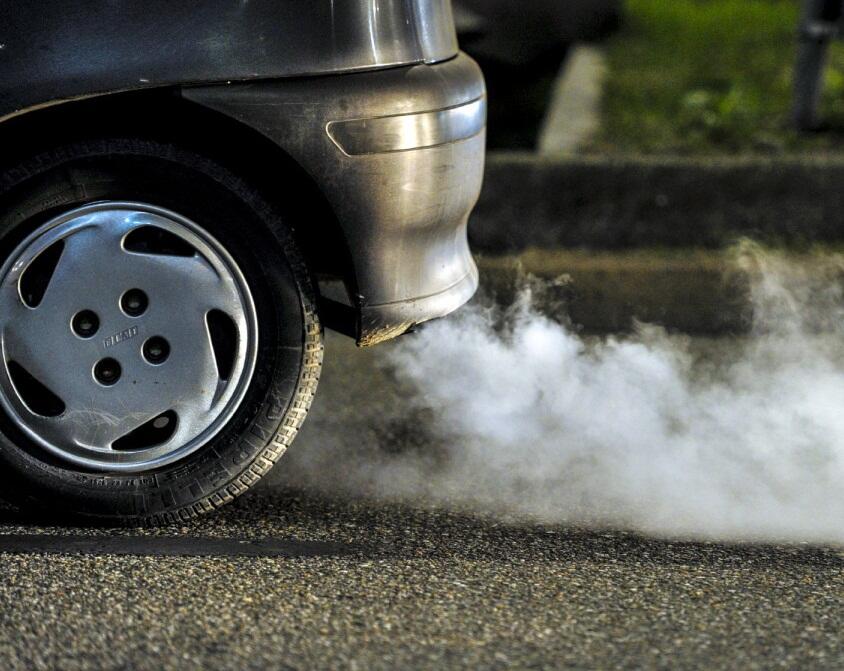The Climate Change Team at the Lebanese Ministry of Environment, with the support of the United Nations Development Programme and funding from GEF has produced a series of national greenhouse gas inventories and mitigation analysis reports for six of its sectors: Energy, Transport, Waste, Industrial Processes, Agriculture and Land-Use, Land-Use Change and Forestry. The Latest report titled: “The National Greenhouse Gas Inventory Report and Mitigation Analysis for the Transport Sector in Lebanon” shows that GHG emissions from the road transport sector calculated under tier 2 increased by a factor of 3.7.
In the framework of Lebanon’s Third National Communication (TNC) to the United Nations Framework Convention on Climate Change (UNFCCC), Greenhouse Gas (GHG) emissions’ trend resulting from the transport sector in Lebanon was estimated from 1994 to 2011. Calculations were made using the Revised 1996 Intergovernmental Panel on Climate Change (IPCC) Guidelines for National Greenhouse Gas Inventories and the 2000 Good Practice Guidance and Uncertainty Management in National Greenhouse Gas Inventories. The GHG emissions from the transport sector, namely carbon dioxide (CO2), methane (CH4), and nitrous oxide (N2O), along with the indirect GHGs (carbon monoxide (CO), nitrogen oxides (NOx ), sulphur dioxide (SO2) and non-methane volatile organic compounds (NMVOCs)) have been calculated in order to be reported to the UNFCCC as part of the TNC. The transport sector is divided into road transport, maritime transport, and aviation. Tier 2 was used for the calculation of emissions from road transport and tier 1 for the off-road transport, fisheries and yachts boats, and domestic aviation.
Inventory
Greenhouse gas emissions from transport totaled 3,629 Gg (Gigagram or 1,000 tonnes) CO2eq. in 2005 and 5,423.98 Gg CO2eq. in 2010, with carbon dioxide being the main gas emitted. Road transport is the largest contributor, emitting 3,619.23 Gg CO2eq. in 2005 and 5,268.79 Gg CO2eq. in 2010 and passenger cars have the highest share of emissions with an average of 60% of the total road transport GHG emissions. Between 1994 and 2011, GHG emissions from the road transport sector calculated under tier 2 increased by a factor of 3.7 in 2011 compared to 1994, reaching 5,796.75 Gg CO2 eq. This growth is mainly driven by the increase of the fleet volume. Direct GHG emissions of CO2 , CH4 and N2 O emitted from the road transport sector significantly increased from 1994 to 2011 by 264%, 159% and 1,000% respectively, with passenger cars as the major contributor. Direct GHG emissions from 1994 to 2011 in terms of CO2 eq. showed an increase for marine international bunkers, with the highest relative yearly increase of 7% observed in the 2005-2011 period. On the other hand, aviation bunkers, which account for international flights only, showed that direct emissions were steady from 1994 till 2005, and then increased between 2008 and 2011. A significant decrease was highlighted in 2006 due to the war that took place during the summer of that year.
Mitigation
The mitigation options analysis is conducted using the For Future Inland Transport Systems (ForFITS) modeling tool, intended to estimate CO2 emissions from transport and to evaluate the impact of mitigation options on transport activity, vehicle stock and energy use. The modeled transport system includes local passenger and freight mobility structure, taking into consideration i the different vehicle classes of the Lebanese fleet, powertrains and fuels used. The model bases its projections on economic and social parameters such as the change of Gross Domestic Product (GDP) per capita and population growth. The scenarios examined in the study aim at assessing the potential of the mitigation strategies identified in the Technology Needs Assessment (TNA) report outcomes in reducing CO2 emissions by 2020 and 2040 compared to the Business as Usual (BAU) trend. The mitigation strategies consist of “renewing the passenger cars fleet with fuel-efficient and hybrid electric vehicles” and “the deployment of a mass transit system in Greater Beirut Area (GBA)”. Accordingly, three mitigation scenarios are derived and examined in the model as follow:
Mitigation option 1: assumes the adoption of an incentivizing sale strategy of fuel-efficient vehicles; consequently, a progressive increase in the share of small vehicles from 11.8% in 2010 to 35% by 2040, paralleled with a reduction in the share of large and inefficient vehicles.
Mitigation option 2: same assumptions as mitigation option 1 in addition to introducing hybrid electric vehicles to the market and a progressive increase of their share up to 10% of new registered vehicles by 2040.
Mitigation option 3: assuming the increase of share of passenger-kilometer activity using mass transport from 36% to 53%, through an efficient mass transport system serving the GBA.
Results indicate that the Lebanese transport sector has significant capacity to reduce its future CO2 emissions with both TNA mitigation strategies. However, the strategy of renewing the fleet with fuel-efficient and hybrid electric vehicles is not sufficient to offset the growth in passenger activity and vehicle stock, both estimated to double by 2040 compared to 2010. Consequently, the adoption of an integrated strategy for a carefully designed portfolio of policies and mitigation incentives is a must, based on the increase of share of mass transport namely in GBA, combined with the replacement of old inefficient vehicles with new fuel-efficient and hybrid vehicles.











